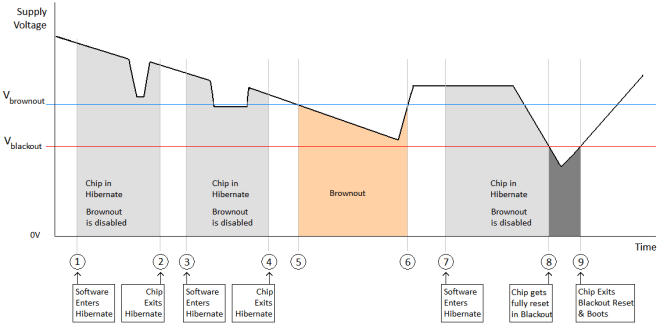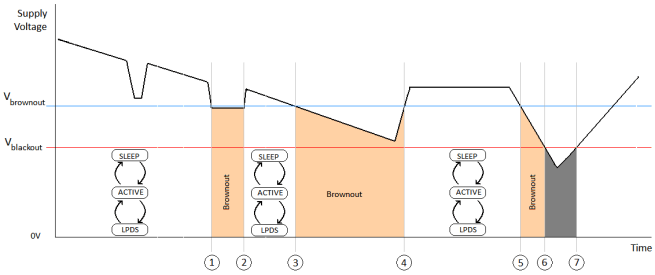JAJSHT5E February 2019 – December 2024 CC3135MOD
PRODUCTION DATA
- 1
- 1 特長
- 2 アプリケーション
- 3 概要
- 4 機能ブロック図
- 5 Device Comparison
- 6 Pin Configuration and Functions
-
7 Specifications
- 7.1 Absolute Maximum Ratings
- 7.2 ESD Ratings
- 7.3 Recommended Operating Conditions
- 7.4 Current Consumption Summary: 2.4GHz RF Band
- 7.5 Current Consumption Summary: 5GHz RF Band
- 7.6 TX Power Control for 2.4 GHz Band
- 7.7 TX Power Control for 5GHz Band
- 7.8 Brownout and Blackout Conditions
- 7.9 Electrical Characteristics for DIO Pins
- 7.10 WLAN Receiver Characteristics
- 7.11 WLAN Transmitter Characteristics
- 7.12 BLE and WLAN Coexistence Requirements
- 7.13 Reset Requirement
- 7.14 Thermal Resistance Characteristics for MOB Package
- 7.15 Timing and Switching Characteristics
- 7.16 External Interfaces
- 8 Detailed Description
- 9 Applications, Implementation, and Layout
- 10Environmental Requirements and SMT Specifications
- 11Device and Documentation Support
- 12Revision History
- 13Mechanical, Packaging, and Orderable Information
7.8 Brownout and Blackout Conditions
The device enters a brownout condition when the input voltage dips below VBROWNOUT (see Figure 7-4 and Figure 7-5). This condition must be considered during the design of the power supply routing, especially if operating from a battery. High-current operations, such as a TX packet or any external activity (not necessarily related directly to networking) can cause a drop in the supply voltage, potentially triggering a brownout condition. The resistance includes the internal resistance of the battery, the contact resistance of the battery holder (four contacts for a 2× AA battery), and the wiring and PCB routing resistance.
When the device is in the Hibernate state, brownout is not detected; only blackout is in effect during the Hibernate state.
 Figure 7-4 Brownout and Blackout Levels (1 of 2)
Figure 7-4 Brownout and Blackout Levels (1 of 2)
 Figure 7-5 Brownout and Blackout Levels (2 of 2)
Figure 7-5 Brownout and Blackout Levels (2 of 2)
In the brownout condition, all sections of the CC3135MOD (including the 32kHz RTC) shut down except for the Hibernate module, which remains on. The current in this state can reach approximately 400µA. The blackout condition is equivalent to a hardware reset event in which all states within the device are lost.
Table 7-1 lists the brownout and blackout voltage levels.
| CONDITION | VOLTAGE LEVEL | UNIT |
|---|---|---|
| Vbrownout | 2.1 | V |
| Vblackout | 1.67 | V |